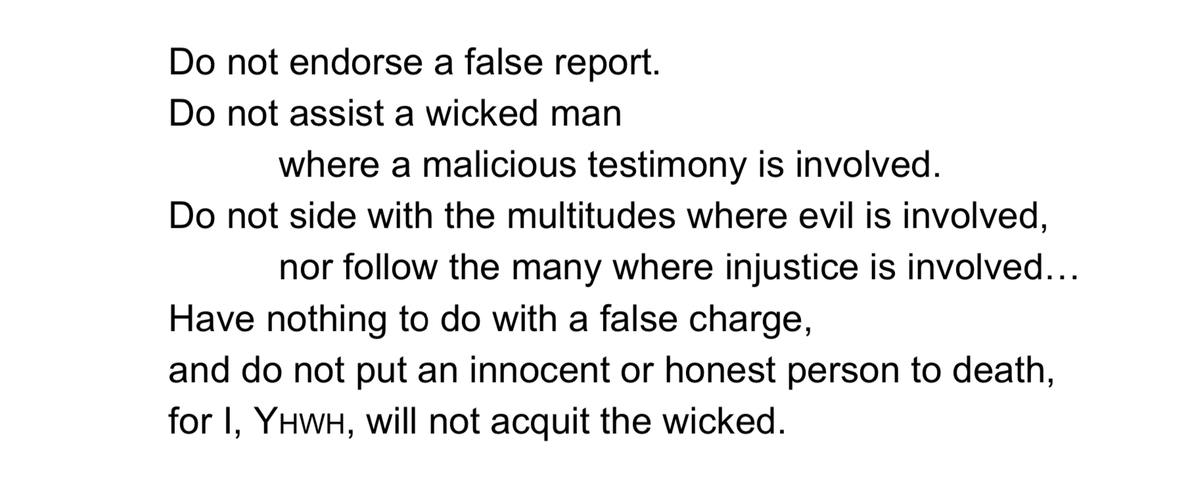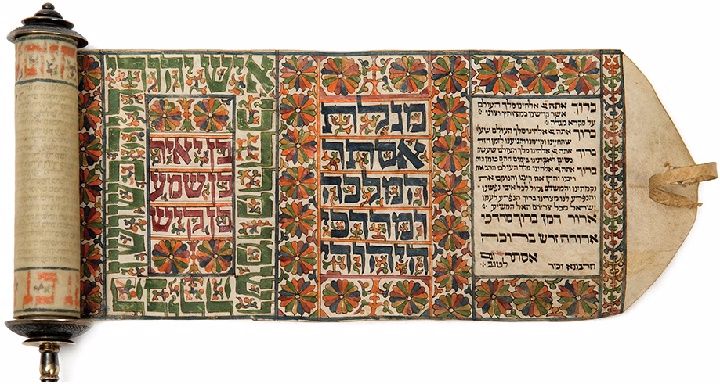John 18–21 and Penal Substitutionary #Atonement (2nd Ed.)
As an uncommon #PassionWeek unfolds, I thought some (perhaps) uncommon thoughts about atonement in John’s Gospel might be of help.
One of the more novel among them concerns the issue of PSA’s provenance.
They are ‘not particularly concerned with the question of how Jesus’ death enables sinners to be forgiven’ (which, of course, is what PSA purport to explain);
The *premise* of the criticism outlined above is quite correct.
The Gospels don’t address the subject of the cross in the way we might have liked/expected.
Or, to put the point more positively, the Gospels do things in their own way.
But to say the Gospels are unconcerned with the question of how Jesus’ death enables sinners to be forgiven is quite incorrect,
John portrays Jesus’ sacrifice, I argue, not merely as the climax of Israel’s history, but as substitutionary, penal, and propitiatory.
As we pick up the story in John 18, the stage is set.
Jesus has recently been anointed in anticipation of his burial, and the Pharisees are now ready to make their final move (12.9–10).
Jesus’ death therefore looms large on the horizon.
It is a death Jesus chooses to die, and one he dies on behalf of others.
Consider, by way of illustration, the events of 18.1–9.
Yet, after supper, Jesus nevertheless chooses to descend into the darkness of the Kidron valley—a place where he can easily be captured, unprotected by the presence of ‘the crowds’.
Judas’s soldiers do not appear to recognise Jesus.
Jesus could easily, therefore, choose to conceal his identity and slip away into the night.
‘I am he!’, Jesus declares.
No-one will ‘take’ Jesus’ life from him; he will lay it down ‘of his own accord’ (ἀφ’ ἑαυτοῦ: 10.18).
Jesus is led away captive so others might go free, ultimately to be slain so others might live (3.16).
But, as @PLeithart has pointed out, Jesus’ disciples are not random bystanders;
If Jesus’ disciples are slain, Jesus’ kingdom cannot succeed.
But John doesn’t portray Jesus’ sacrifice as a sacrifice for Jesus’ disciples alone.
In 18.13, where he reintroduces Caiaphas into the story, John reminds us of an important piece of information, viz.,
Caiaphas’s statement can be understood in at least two ways.
Caiaphas wants to dispose of Jesus in order to spare his people, Israel.
Earlier in John’s gospel, the authorities identify Jesus as a man with the potential to stir up Israel against the Romans (with disastrous results: 11.48–52),
Rather than allow Jesus’ ministry to continue (at the risk of Israel’s place in the empire), the chief priests hand Jesus over to the Romans.
True, Jesus will ‘die for his people’ insofar as his death will preserve Israel’s place within the Roman empire.
But Jesus’ death will also meet a deeper need.
For John, then, Jesus dies on behalf of—and as a substitute for—all Israel.
But, for the moment, let us move on to consider the legal aspect of Jesus’ death.
If Caiaphas’s statement in ch. 18 concerns the substitutionary aspect of Jesus’ death, then the chief priests’ statement (in ch. 19) concerns its legal aspect, i.e., the relationship between Jesus’ death and the law.
First, it can be taken at face value.
The Jews do indeed have a law: they have a body of rules, developed by the accumulation of tradition and handed down to them by their ‘fathers’.
He performs many of his miracles on the Sabbath (when he could just as easily have waited until Sunday).
And, on one occasion, he restores a blind man’s sight by means of a ‘paste’ he makes,
Given the Jews’ (oral) law, then, Jesus must die.
He is a law-breaker, and must be punished as such.
yet Jesus himself will be innocent—a notion which we will expand on later. (Nothing in the passion narratives is insignificant.)
Given the stipulations of Mosaic law, if Jesus is to redeem his people, he must die.
As such, Jesus’ death takes place κατὰ τὸν νόμον = ‘in accord with the law’ and its (just) demand.
We hence come the issue of guilt and penalty.
Suppose our discussion to date has been correct; that is to say, suppose John portrays Jesus’ death as substitutionary and penal.
In what sense does Jesus die a death which is deserved by others?
The answer requires us to consider two important aspects of John’s passion.
When Pilate asks the chief priests why they want Jesus hung, they do not cite their own laws or traditions.
Should the priests’ accusations be upheld? μὴ γένοιτο!
They are mere men, yet they have exalted their traditions above the law of God—‘hired hands’, yet they have (unlawfully) assumed the role of Israel’s Shepherd (cp. 10.10–13 w. Psa. 23).
And Pilate contravenes them at every point.
since when charges are falsely brought against a man in Mosaic law, those very charges must be paid by the man’s accuser(s) (Deut. 19.18–19).
Caiaphas and Pilate are not isolated figures on the stage of world history; they represent whole people-groups.
The guilt incurred by Caiaphas and Pilate is not, therefore, incurred by them alone.
It is an event of epic significance and proportions in and of itself—a microcosm of the way in which every man and woman must take their stand either for or against God and his Messiah,
‘If you choose to release Jesus’, they tell Pilate, ‘you are no friend of Caesar’ (19.12).
which is the same decision every man must make.
In our text, two parties appear before Pilate: the chief priests and Jesus.
and Jesus is clearly innocent of their accusations. (Indeed, Pilate declares him as such on three separate occasions.)
Pilate thus treats an innocent man as if he is guilty and allows a guilty party to go free,
‘(God) made him who knew no sin to be sin on our behalf’ (2 Cor. 5.21).
not on the stone pavement before Pilate’s judgment seat, but on the sapphire pavement before God’s heavenly throne.
More, however, needs to be said about the role of federal headship in John’s passion, since Caiaphas and Pilate are not the only federal heads in view.
and one whom Caiaphas and Pilate have (rightly) hailed as ‘King of the Jews’.
Yet John records their actions because he wants us to perceive their deeper significance (cp. Dan. 7.13–14).
And that fact becomes even more significant when we consider what Pilate decides to inscribe above Jesus’ head.
Why does John record such an apparently irrelevant detail? Why is it important for us to know?
My suggestion is follows:
but over the law (hence it is also inscribed in Jewish Aramaic and Latin).
whether committed under the Mosaic law (Jewish Aramaic) or common law (cp. the Latin).
We thus come to the subject of atonement.
As we’ve seen, Jesus’ death is voluntary, penal, and substitutionary.
But in what sense is it an act of atonement? How is it reparatory/restorative?
For a start, John’s narrative includes a number of allusions to the cultic system.
Why? Because John wants us to interpret Jesus’ death as a Levitical sacrifice,
In a sense, Peter has brought a sacrifice to the Tabernacle, just not in the normal way.
In Lev. 14, the man-to-be-purified is brought to the priest, examined, and led outside the camp, where a sacrifice is offered to the LORD, all of which is echoed in John’s passion.
The ritual described in Lev. 14 involves seven components:
cedarwood,
scarlet yarn,
hyssop (dipped in blood),
a source of running water (lit., מַיִם חַיִּים = ‘water of life’),
and a clay vessel.
Curiously, each of these components has a counterpart in John’s crucifixion scene.
a purple robe,
a sponge drenched in wine (passed to Jesus by means of a hyssop branch),
and two potential victims,
one of whom will be killed (Jesus) and the other released (Barabbas).
from which water flows forth in anticipation of the ‘water of life’ soon to be poured out on the post-resurrection world (in the form of the Holy Spirit).
For John, Jesus’ death enacts a reparatory sacrifice—an act which will cleanse and purify a sin-stained and impure world.
John also brings out the reparatory nature of Jesus’ death in a further way (which we have just hinted at),
As @PLeithart has pointed out, John’s Gospel cannot legitimately end with Jesus’ death since sacrifices do not end with the death of the animal.
Rather, sacrifices are ‘offered up’ to God on an altar.
And precisely the same logic connects the text of ch. 19 to that of chs. 20–21.
Consider, by way of illustration, the state of play at the conclusion of ch. 19.
They have abandoned the one they love and failed their leader, and there remains little for them to do but go their separate ways and return to their previous lives.
Scripture’s final comment on the disciples’ lives would have a description of their faithlessness, shame, and estrangement,
Yet, in the silence between chs. 19 and 20, heaven has its say.
God does not approve of Pilate’s verdict. He overturns it in the most dramatic way possible—by means of the resurrection.
Soon afterwards, the disciples—whom Jesus refers to as ‘his brothers’—reassemble.
With ch. 18’s charcoal fire happily reinvented, they eat and drink in the presence of their risen Saviour.
As such, Jesus’ death and resurrection make full reparation for the disciples’ sins.
With the trials of Psa. 22 behind him, Jesus moves on to the Psalm’s triumphant finale.
refers to them as ‘his brethren’,
and later (per the words of Psa. 22.26) invites them to ‘eat and be satisfied’.
where ‘tears’ are no longer the order of the day (‘Why do you
weep?’),
and where Israel’s cry of ‘Behold, this is our God!’ finds an echo in Thomas’s remarkable confession, ‘My Lord and my God!’.
It has overcome the power of the law and ispo facto the sting of death.
We thus come to our final issue, viz., the issue of divine wrath.
What role does divine wrath have to play in John’s passion?
But does the ‘aversion’ of divine wrath necessarily entail its ‘satisfaction’? I believe so.
Three points in particular can be noted by way of demonstration.
rather, it is ‘expended’ on the sacrifice of the lamb.
God prepares a ‘cup’ for Jesus (18.11)—a vessel prophetically associated with YHWH’s anger—,
As such, God’s wrath is ‘expended’ on Jesus rather than on his followers.
PSA is not a theological construct which needs to be imported into John’s gospel.
On the contrary, it is hard-wired into the particularities of John’s narrative and lived out by its main characters,
At the outset of ch. 18, Jesus descends into the darkness of the Kidron valley, where he is betrayed by a close friend, which marks the start of the most remarkable sequence of events in world history.
Thereafter, he is led away, first to a priestly courtyard and later to a Roman-governed court.
He is questioned, mistreated, and unjustly condemned, acknowledged as innocent by even his judge.
And, at the time of Israel’s Passover, while a known criminal is released, he is crucified.
Yet, on the first day of the next week, God raises Jesus from the dead.
By means of the flow and symbolism of these events, John portrays Jesus’ death as a sacrifice which is (among other things) voluntary, substitutionary, penal, and propitiatory.
THE END.
Please Re-Tweet.






